-

English translation by Mario Beltramini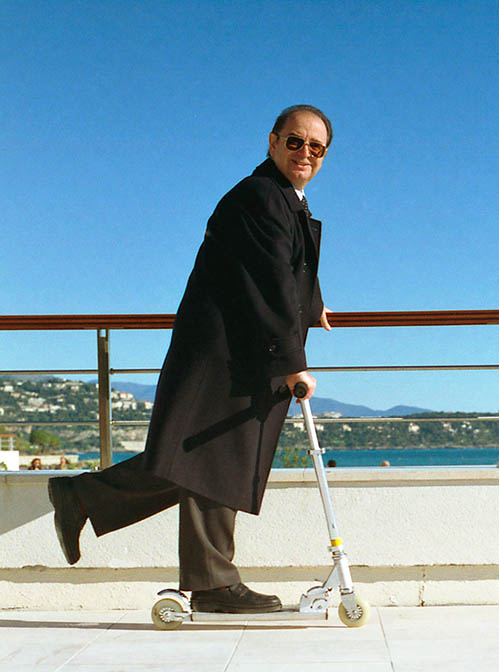
Giuseppe Mazza
I was born in Busto Arsizio, Italy, on November 19th, 1944.
I might be born in Milan, where I have grown up and where, later, I have done my studies… but, there was the war, and my parents, in order to avoid the bombings, had taken refuge in their country house.
I might be born on November 18th, or 20th, but the destiny has chosen the 19th, the day of the Monegasque national holiday… and, in fact, on April 20th, 1999, I had the exceptional privilege to be naturalized Monegasque.
I would have liked to take my degree in biology, but the family council, which saw in me a brilliant future banker, was of a different advice… and I was compelled to withdraw the inscription and to get my degree in economical sciences.
A few months before discussing, with excellent marks my degree thesis on “Economical cycles and building ones” … I had, however, already published a book about aquaria, and I was preparing a book about the world seen through the microscope.
I was contributing to encyclopaedias, I was moving my first steps in a promising activity as a 16 mm. cinematographer… when I had to leave for my 18 months of military service.
Country artillery second lieutenant… a time I remember with pleasure… also because I was directing the photographic reconnaissance, and I was often on the ground of the exercises, in comfortable tents, in touch with the nature.
My superiors were very happy and were often granting me “reward leaves”, even to go to Paris, where I was working for Larousse and Tele 7 jours, which, every week, was offering natural services to readers.
Since the discharge and the letter of congratulations from the Colonel, from July 17th, 1971, I did not have any more and “superior”, and as an independent professional, I devoted myself to nature at full time. Looking for animals and plants, I had been already in Kenya and Tanzania in 1966, in Thailand and → CEYLON in 1969. But after the discharge, they were important trips, planned in details, with driver and assistant… who, starting from December 9th, 1972 … is my wife Giusy.
-
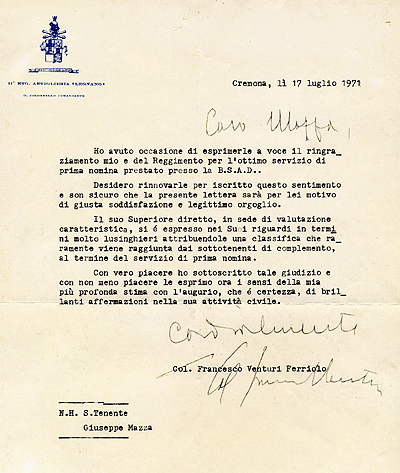
The discharge from the Army
Internet was not yet existing, and times required for organizing things were very long. The films had to be kept away from heat in thermic boxes, and sealed after exposure in small sacks dehydrated with silicon gel crystals.
Every film had to be accompanied by a brief note, with the subject and exposure, in order to guide the flow development, later on, if required. I have never been envious of anybody, but present digital cameras are of an insulting easiness.
On August 28th, 1971, big trip to Kenya, Uganda and Tanzania, with emplacements from the boat for hippopotamuses, crocodiles, and monitor lizards, at Murchison Falls; on January 5th, 1972, Eritrea, where inhabitants still speak Italian; on December 11th, 1972, our honeymoon trip is, of course, in Kenya, Uganda and Tanzania.
We sleep in the famous Treetops Hotel. Lions, giraffe, elephants, rhinoceros, gazelles, and huge gnu herds in the Serengeti.
On December 27th, 1973, we go to the Maldives Islands for diving; on February 15th, 1975, East Africa again; on December 23rd 1975, Thailand once more, looking for rare snakes and birds, like the Open beak storks, which we approach, with the help of Bangkok University, in a nesting area closed to public.
During pauses, however, I was going on, using university books, with a solid zoological and botanical formation.
In spring time of 1976, we move definitely to the Principality of Monaco.
Excepting climate and scientific opportunities, the Italian nation, with its severe laws for repressing unlawful export of money, was in fact too strict for us, as it was rendering difficult our displacements.
-

The wedding day
Even if now the thing can appear incredible, for every trip, we had to agree months in advance with Cambital, the Italian state exchange office, the amount allowed to be taken abroad… and when the stay, like in Thailand, was getting longer than what expected, there was no other solution than to adapt ourselves to small hotels and local restaurants, often very far away from our standards.
The idea had arisen in 1975, while in Switzerland on board a motor home, in order to be independent, we were preparing a book for Mondadori about plants of interiors.
The director of the Botanical Garden of Zurich invited us to meet, for the section dedicated to the succulent plants, his friend Mr. Marcel Kroenlein, Director of the → EXOTIC GARDEN OF MONACO, and that was love at first sight.
It was late autumn, but compared with Milan, in Monte Carlo it was still summer.
Marcel did convince us immediately. There was the Exotic Garden, the plant collection of Marnier Lapostolle, the → OCEANOGRAPHIC MUSEUM, and a splendid hinterland with the Park of Mercantour and the Vallée des Merveilles.
-
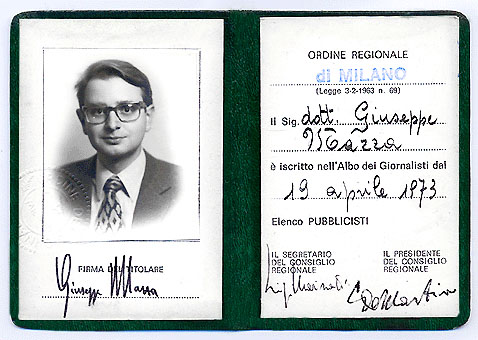
My press card
Also, on the family side, we were not completely left alone. We had a cousin in Monaco, Mrs. Sandra Scola, resident there since 1956. We discuss the matter with our parents, and in less than one month, we take the decision without any regret. It was then necessary to inform friends and editors, to explain them the advantages of the choice, that the file would have become more furnished and… nothing was changing. On the lorry which was taking us to the Principality of Monaco, there was all our life of young couple, aquaria included, and the branches of the much loved philodendron. Upon arrival, I have placed it, in the two big cement pools shown in my service about → AQUARIUM FISHES.
At their place, now there is only one 800 litres aquarium. The plant has grown up, and covers, like wall paper, two walls of my working room, with about 14 square metres of leaves. In October 1978, we read on the newspaper that somebody has renounced to a travel in Arizona, and that two plane tickets are sold at low cost. We have not to ask for money to Cambital any more, and we leave quickly… so much quickly, that I forget my driving license and so I must undergo again the examination for same when in USA.
United States enchant us. People is very friendly, and does not hesitate in opening their houses to us.
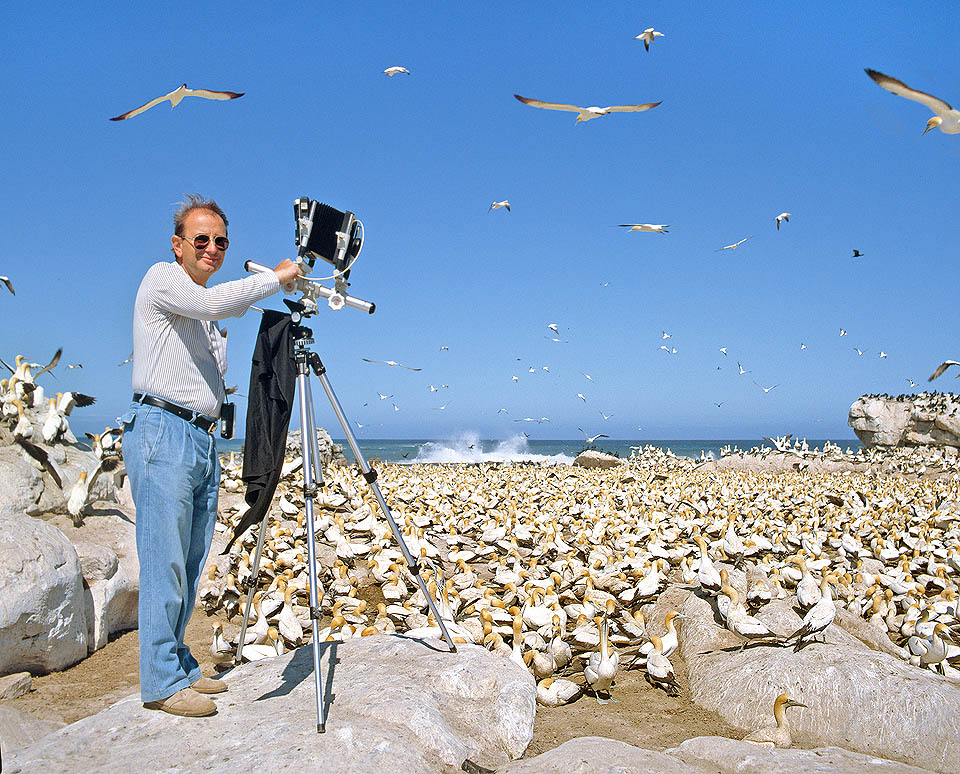
Gannets photos in South Africa. The 6×7 cm format, with optical bench, always satisfied me greatly, but had to be focused with a black coat on the head.
In February 1979, it’s the time of Florida. Besides filming the extremely rare Puma of Florida, I am able to get in touch also with some local editors, and a few months later, American pupils were discovering my photos in their school books.
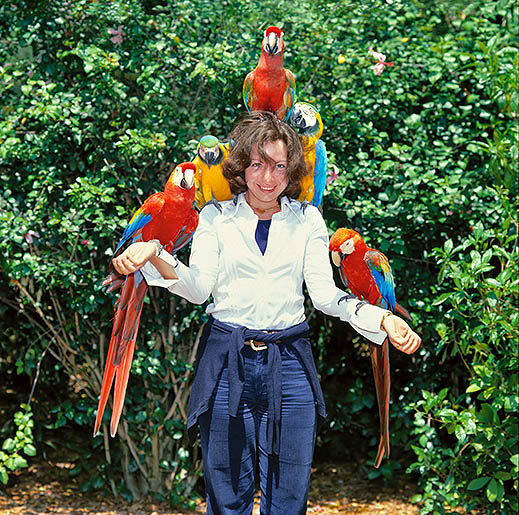
His wife in Florida, a few years ago
In Europe, in the meantime, I had published three more → BOOKS with Mondadori, which were translated in several languages, and had entirely illustrated, from the beginning to the end, the Animals Utet encyclopaedia.And I think it can be said that in the last 40 years do not exist Italian encyclopaedias about nature, without a rich presence of my photos.
I had been busy also in the Principality. In 1979, my first → STAMP is issued, dedicated to the rose Grace of Monaco. And after various meetings with the Princess, I organize with her a public projection of my photos of plants. Her Highness wishes to see, one by one, all the images, and invents also a title “Fiorama”. It’s May 10th, 1980, on occasion of the International competition of bunches, the main hall of the Auditorium Rainier III is completely full.
I guess it was the swan-song of the “magic lantern”, as, at that time, we were still using a hand projector.
Nowadays, a computer is utilized for conferences. At that time, it was possible to assemble semi automatic slides with the 24×36 mm. photos. But mine, done with a Hasselblad and a Linhof, were 6×6 or 6×7 cm.
The Princess had sent to buy in Milan the only projector capable to support such format. The lamp and the ventilation were good, suitable for a great hall, but all was manual.
Slides, mounted like relics on small frames in glass, had to be inserted head down in the darkness of the room, and in order to synchronize the movement, we had to rely on some musical separations.
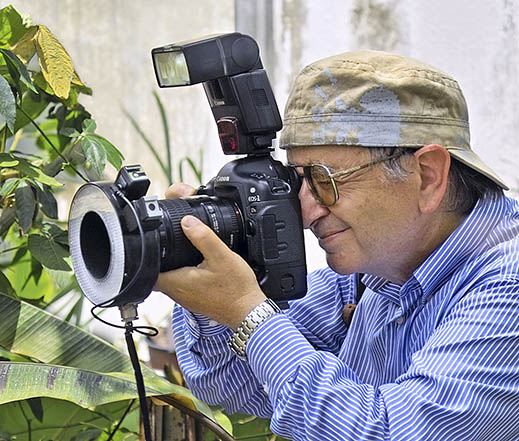
Operating a recent digitalized camera
Three weeks of training with Giusy, a lot of applauses, and then a really unforgettable “grande soirée” with Her Highness. On February 2nd, 1980, we discover Australia. It’s the first of the three long trips I will do in this fabulous continent. We shall go through, by car, all the South-east, from Perth to Brisbane. An abundant crop of journalistic services on Natura Oggi, Scienza e Vita and Gardenia. Through this magazine I will introduce in Italy species till then unknown in the horticultural world.
The → BLOOMING EUCALYPTI which compete with mimosas, the → BANKSIA with thousands of sweet corollas, the → KANGAROO PAWS for away relatives of lilies, the → GREVILLEA strange vegetable feminists, the → RAINFOREST with lobsters walking out of the water, the → BLACKBOYS which have done an agreement with the devil, the → VERTICORDIA with their elegant corollas, and many → INUSUAL PLANTS or with a → PYROTECHNIC APPEARANCE.
For what animals are concerned, I talk of course of → KANGAROOS, but also of the famous → TASMANIAN DEVIL with its carnivorous relatives, the → WOMBATS, untiring diggers, and, generally, of the → MARSUPIALS.
The → SPECTACLES PELICAN with an egg which opens under my eyes, the → PENGUINS PARADE which carry, in orderly squads, the food to the young waiting among the dunes, the → PLATYPUS , duck-billed mammal with a poisonous spur, and, above all, the → KOALA with the views of the young which gets out from the maternal marsupium and kisses the mother, which have done the round-the-world tour .
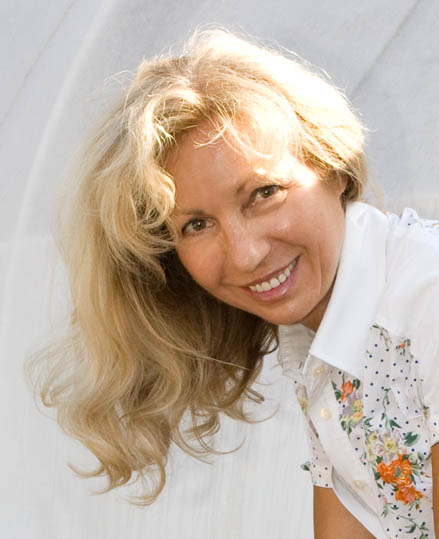
Giusy: my assistant wife
- On March 3rd, 1981, our daughter Emilie comes to life. Princess Grace presents her a small dress. We are very much touched. Relations with the Palace increase, because I am preparing with Mondadori a book about Garden flowers, and Her Highness will write the preface for me. I still remember when I did sow her the printing essays. Huge rolls, with the photos, which we opened on the ground.
On October 20th, 1983, my second daughter, Marina, comes.
Some trips to North Africa, Ceylon again, and then, starting from October 14th, 1984, a new great love: South Africa. In the course of four long trips, I realize so many services to deserve from South African authorities, the title of “Honorary Ambassador of South African tourism”.
Everything matters to me. The → PLATINUM MINES, the → CAPE OF GOOD HOPE, and even the → FISHING INDUSTRY in Lambert’s Bay.
Here, to say the truth, I was mainly attracted by a large colony of gannets of the Cape: thousands of nesting couples, one close to the other, which had to queue, for taking off from a small strip of free ground, which they had decided to use as “airport”.
I interview Chris McBride, author of a best-seller about the → WHITE LIONS, and I travel all over the country, not forgetting Namibia.
I photograph the breeding of → OSTRICHS, the → PENGUINS OF THE CAPE, the incredible → STAR FLOWERS, the → PLANTS WHICH LAY EGGS, the → NAMAQUALAND deserted area with the highest concentration of flowers in the world, the → STONE PLANTS, the → ALOE, the → FLOWERS WHICH OPEN AT NOON TIME, the → BOTANICAL PELARGONIUM, ancestors of those present in our balconies, the → LEUCADENDRON, the → LEUCOSPERMUM, the → SOUTH AFRICAN PROTEACEAE, the → PROTEA, and the → WELWITSCHIA, an authentic living fossil.
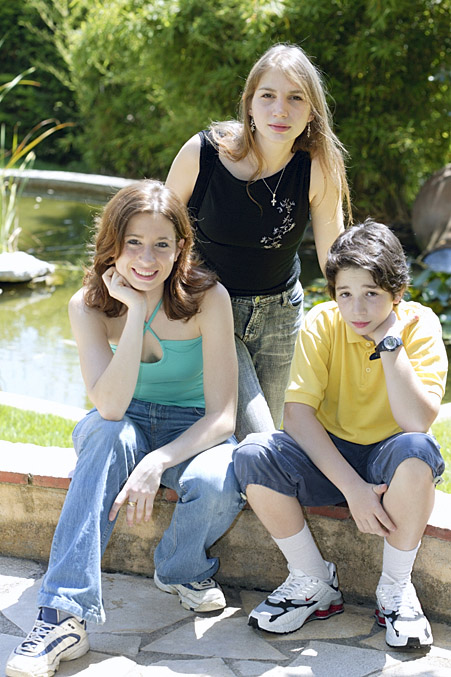
The children: Marina, Emilie, and Jean-Louis
On August 16th, 1992, Jean-Louis was born.In the meantime, I have visited → CUBA, mainly for the → BOTANICAL GARDEN, rich of palm trees, and published a total of 13 books and 400 journalistic services.
Recently, I have taken interest in the Canary Islands, and the Seychelles, where I have realized services on the → GIANT TURTLES, the → CARNIVOROUS PLANTS, the → VICTORIA BOTANICAL GARDENS, and the → COCO DE MER, the legendary coco palms, which recall the feminine anatomy, which were believed to be living in the bottom of the sea.
With the digital period, photography does an enormous step ahead. Earlier, colours were destined to get lost. Nowadays, photos, like literature and poetries, are potentially eternal. My big job, for the next 20 years, will be to rescue, by means of digitalisation, of the 70.000 photos of my archive.
With a professional scanner, the Imacon, I digitalize the 6×6 cm. and 6×7 cm. slides at 3200 dpi 16 bits, thus having more “material” on which to operate. Images obtained in this way are huge. A metre wide, they weigh about 350 Mo… practically, only two photos might stay on a single CD. With hours of work, they are calibrated and touched up.
I eliminate scratches, little dirts, and faults, with a real and proper artistic activity. Today, the border line between photography and painting is very thin, and the elaboration of images after the click is as important as the filming itself.
Even if the final output is in RGB, I work mainly in LAB way, which allows to emphasize, if necessary, the smallest variations of colour, seen that we do not work on the colours curves, but on the curves of difference between opposite colours. Then, the image is reduced to 8 bits, the weight is halved, and it can be filed, in double copy, in DVD, and seven further copies in seven external hard disks. With the programme Cumulus, I add to the scientific names, some “keywords”, which allow me to find immediately the images, and to photograph by groups the screens I put in internet.
Also this work is very long. The most important groups are now the →ROSES, the →FISHES OF THE SEA, the → MUSHROOMS, the → BUTTERFLIES, the → PARROTS and the → MOLLUSCS, but I have put in the net only the 20% of the pictures to be kept. It is sufficient to give a glance to the list of the pictures I still have to digitalize to be quite impressed.
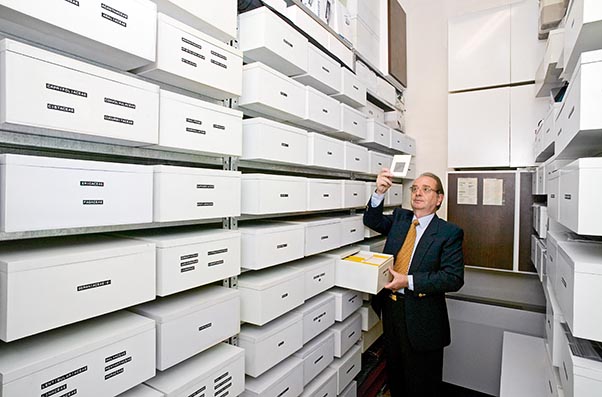
Photomazza archives
In the meantime, for their preservation, I have air conditioned the archive, thus the humidity remains constantly at 40%, and the temperature does not trespass the 20°C.During winter time, only the Munters works, it’s an apparatus which sends the air into crystals, regenerated by heat, which absorb the humidity; and in summer time I switch on, also, a normal close circuit air conditioning apparatus, which lowers the temperature.
One of the most thankless tasks is the selection of the photos to be digitalized. I would like to save them all, like a clever mother does with her kids, but this is not possible, seen that I proceed with the rhythm of 4 photos per day, not considering the new digital photos which in case must be worked.
The magazines for which I was writing, have almost all passed away, or are agonizing, and nobody is talking now of encyclopaedias… there’s internet for the informations.
As a compensation, the net allows me to create autonomously new services, as I have recently done for the → NATIONAL MONEGASQUE PLANTS, and this to much to my satisfaction. Every day, I have more than 3,500 visitors on the site, devoted people or occasional ones, who often write to me. I would like to put there larger photos, but then arise problems of weight, and … informatics piracy. As scientific nomenclature evolves rapidly, before entering a name in the site, I control on the books and the web… and, surprise… I find quite often my own pictures, entirely photocopied from Mondadori books. An Italian guy had placed 300 of them on a site of aquaria, and a Brazilian one had done the same with the medicinal plants.
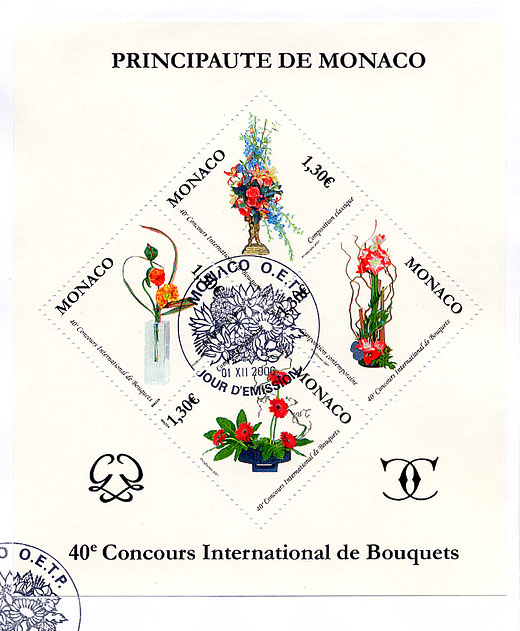
Stamps with photos transformed in drawings
And, what was the worse, under the photos there was not even my name,… but the copyright of that site.On the other hand, many fora and associations have “decorated” me with some links. I count thousands of them, and I take the opportunity to heartily thank them all.
Alexa, which makes the ranking of the most visited sites in the world, places us in this prestigious position.
Inevitably, I have become also somewhat informatics. Thanks to the computer, I am almost able to transform the photos in drawings for the stamps which advertise the “Concours des Bouquets”, and today I dispose of a range of colours which could not even be imagined at the time of the films. Touching up the archive photos, is for me often like completing a painting begun 30-40 years ago.
At first, there is the idea of the photo, then the photo. The idea is perfect, the photo, not, because human implements are however inadequate. Many persons do tell me :”If you are unable to digitalize the archive quickly…, why don’t you hire somebody to do it”? They would not be any more my photos. And nowadays, thanks to the technical evolution, I can express better, with Photoshop, the emotions of old times.
In this world, which is changing, in the meddling of professions, in all these years, however, one thing has remained untouched: my astonished look to the nature.
Beauty for itself, beauty quite often scientifically not necessary, even in the smallest particulars.
After my first love for animals, it has grown in me, while ageing, the interest for plants, which I see just like as “different animals”. As a matter of fact, the life was born on earth only once, and the first animal… was a plant which had lost the chlorophyll. By sure, we, animals, have done a lot of way from those times; but to reduce our dimensions, it is sufficient to think for a moment that we cannot do without the plants, whilst they can very well do without us.
And also if during our holidays we shall never see along the roads, as sometimes happens for dogs, notices with written “do not abandon your philodendron”, let us remember, when we purchase a plant, that they are not knick knacks, but living beings and our far away relatives.
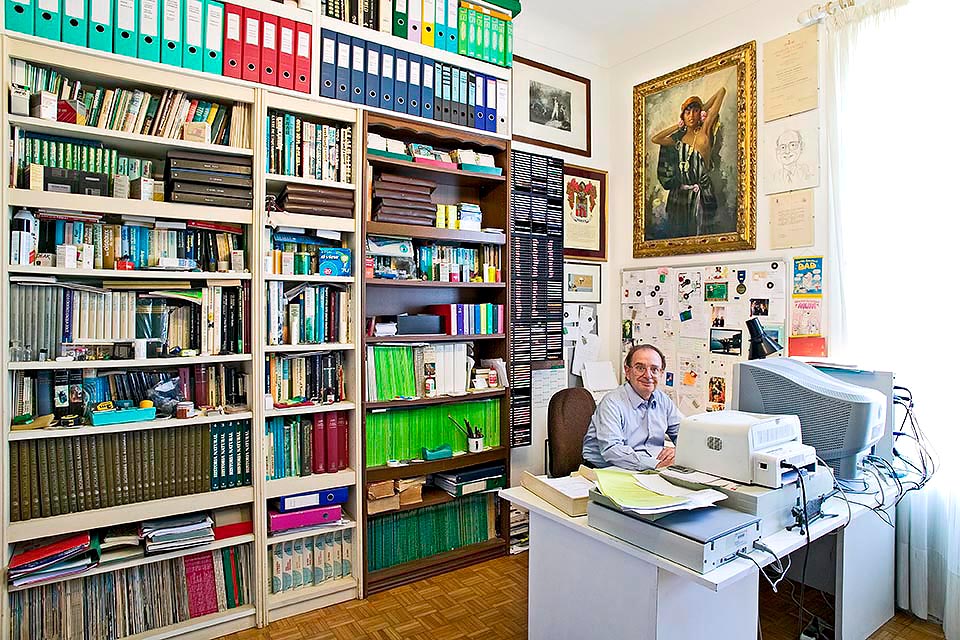
My webmaster job is much implying. With some friends am creating in Internet an encyclopedia dedicated to nature. We need qualified authors and translators from Italian to French and to Spanish. The site is presently translated in English and Italian by the 100%, in Spanish by the 80%, and by the 25% only in French.
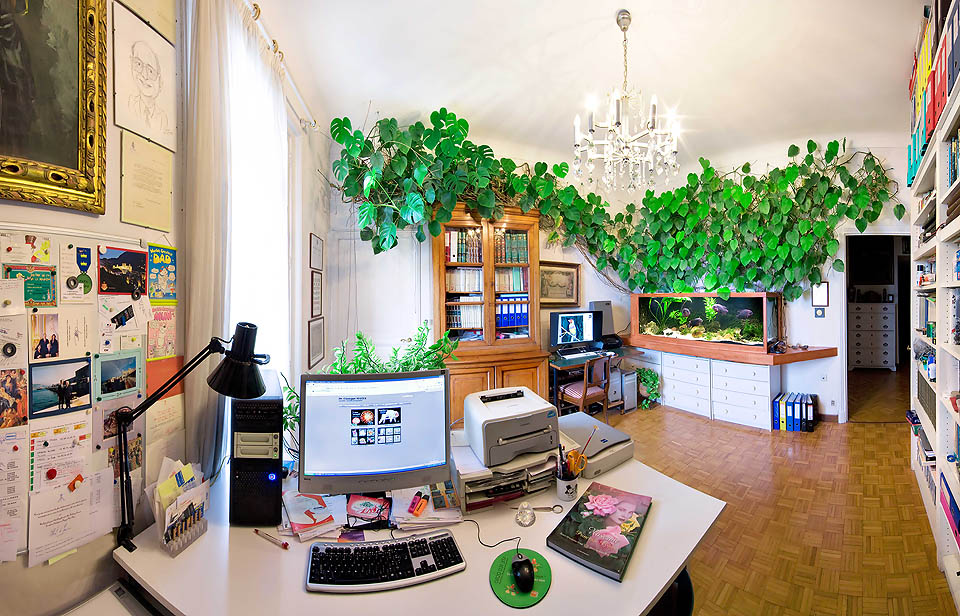
The working desk, the aquarium and the well-known philodendron
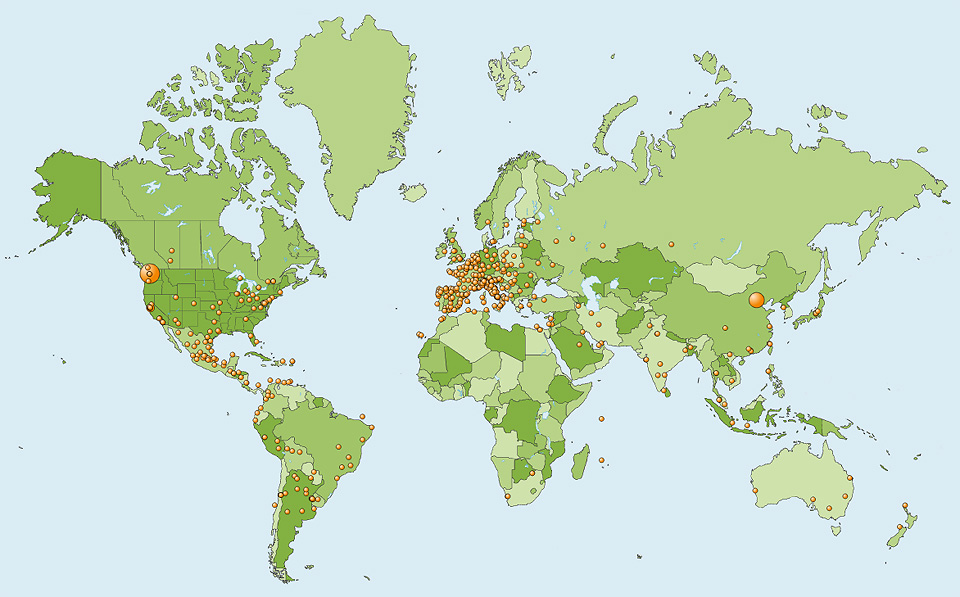
Geographical distribution of visits to Photomazza in 2007
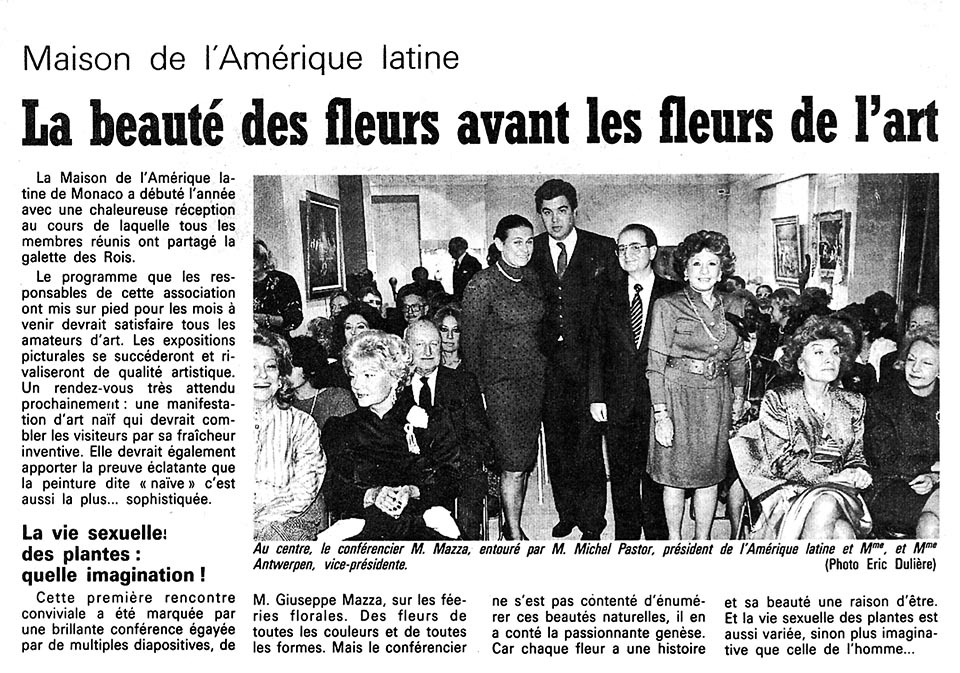
Nice Matin relates of a conference of mine about plants
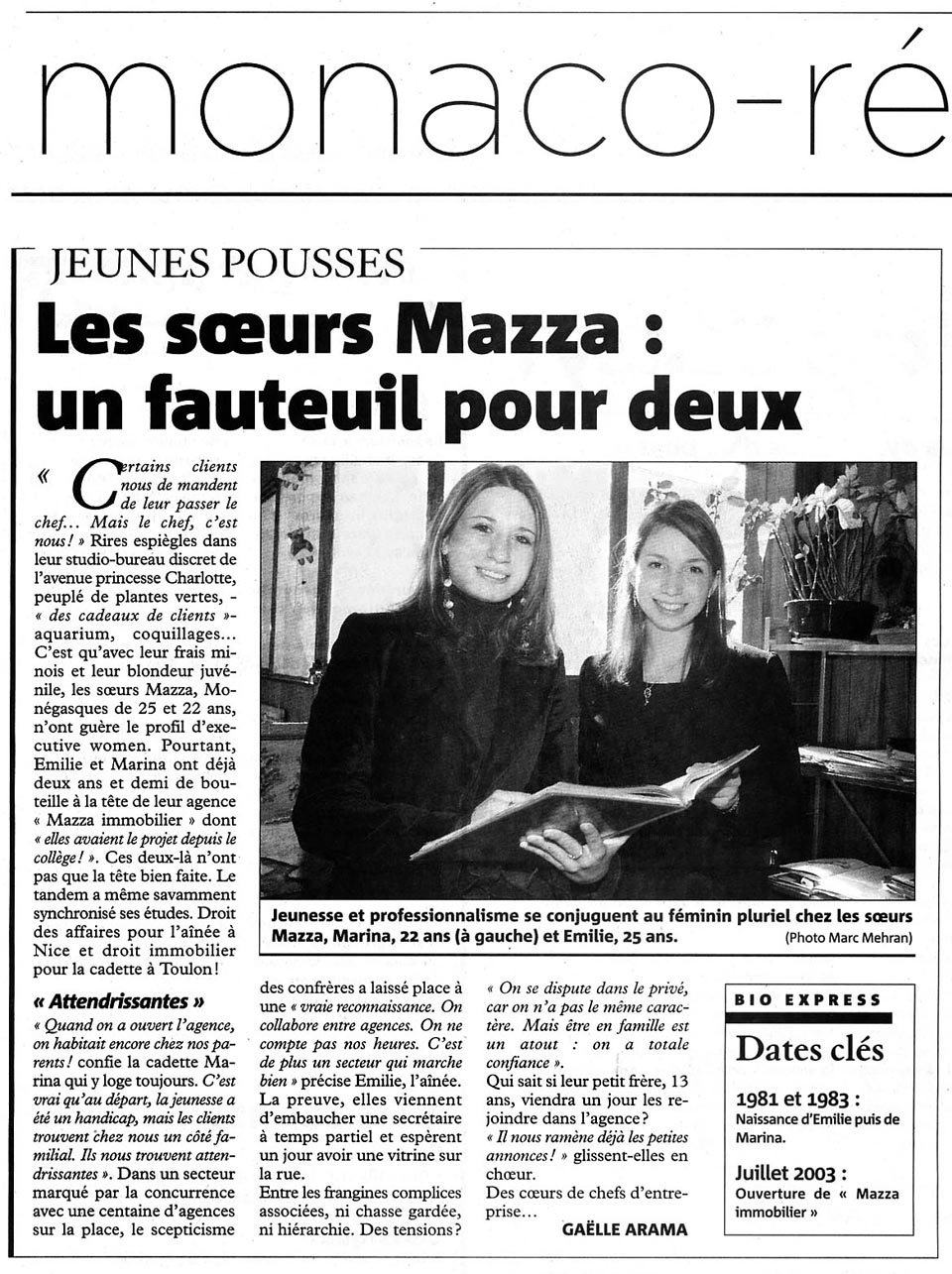
My daughters have set up an estate agency in Monaco
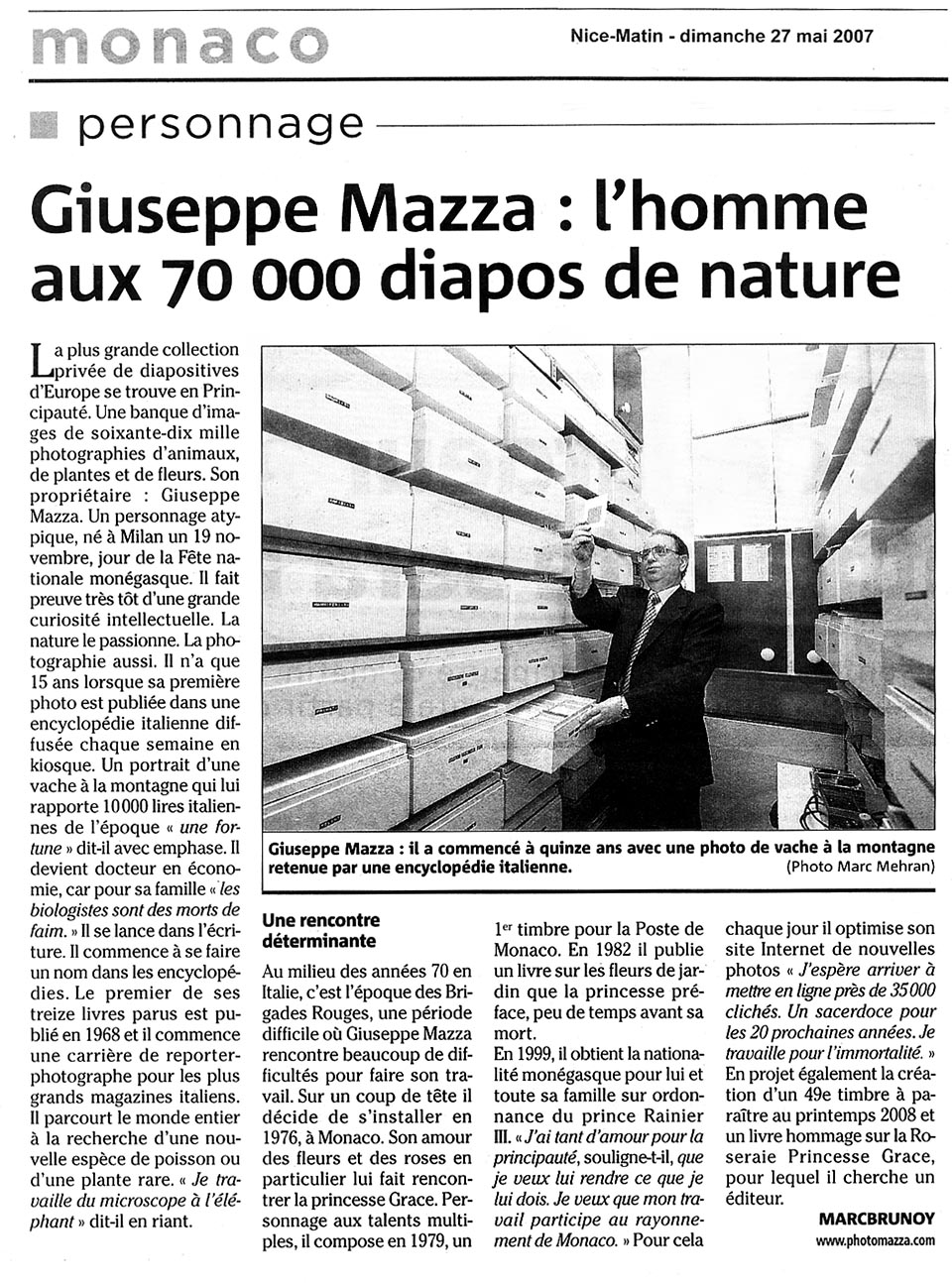
A recent article about Photomazza
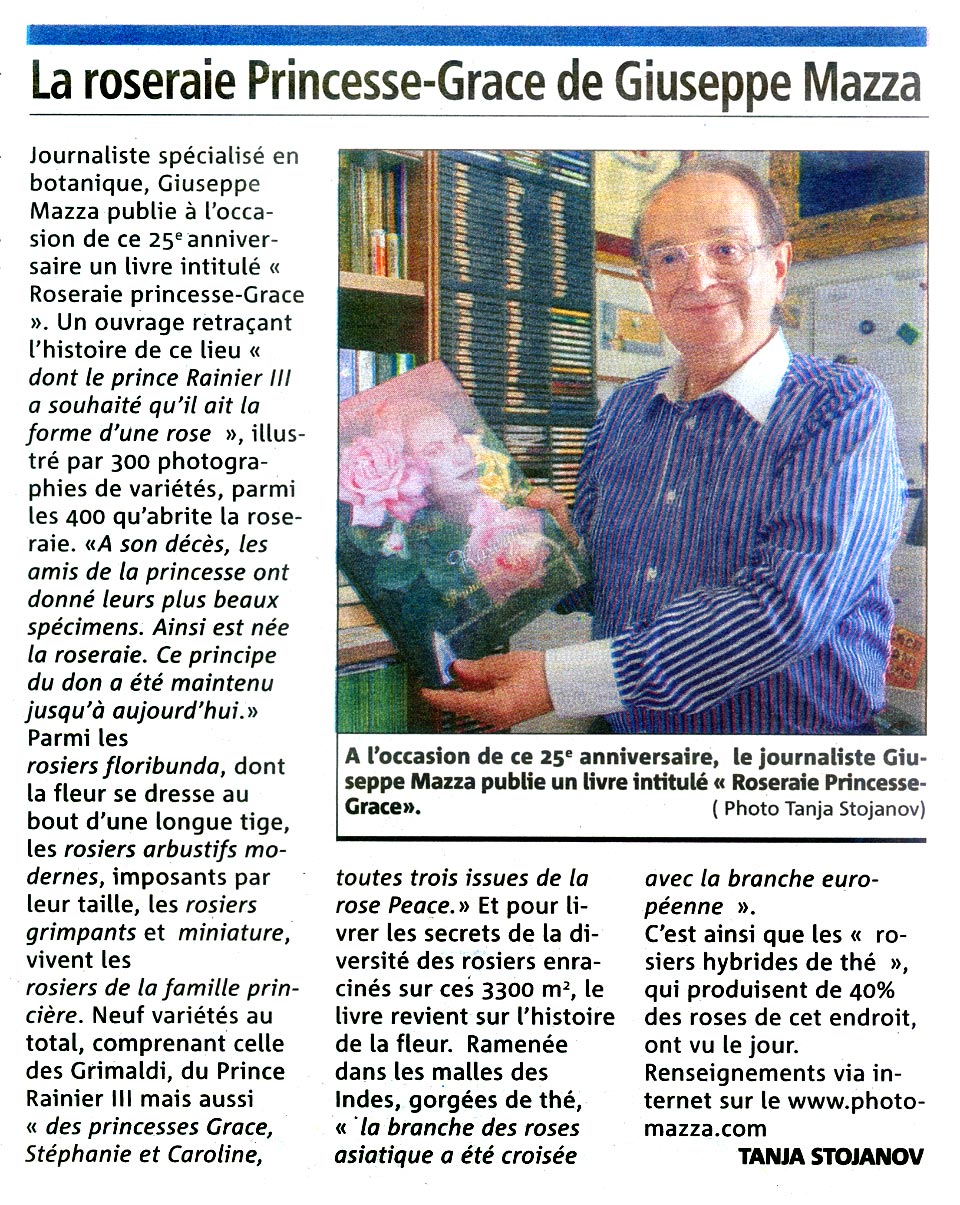
June 14th, 2009 Monaco Matin article concerning the publication of the Princess Grace of Monaco Rose Garden book
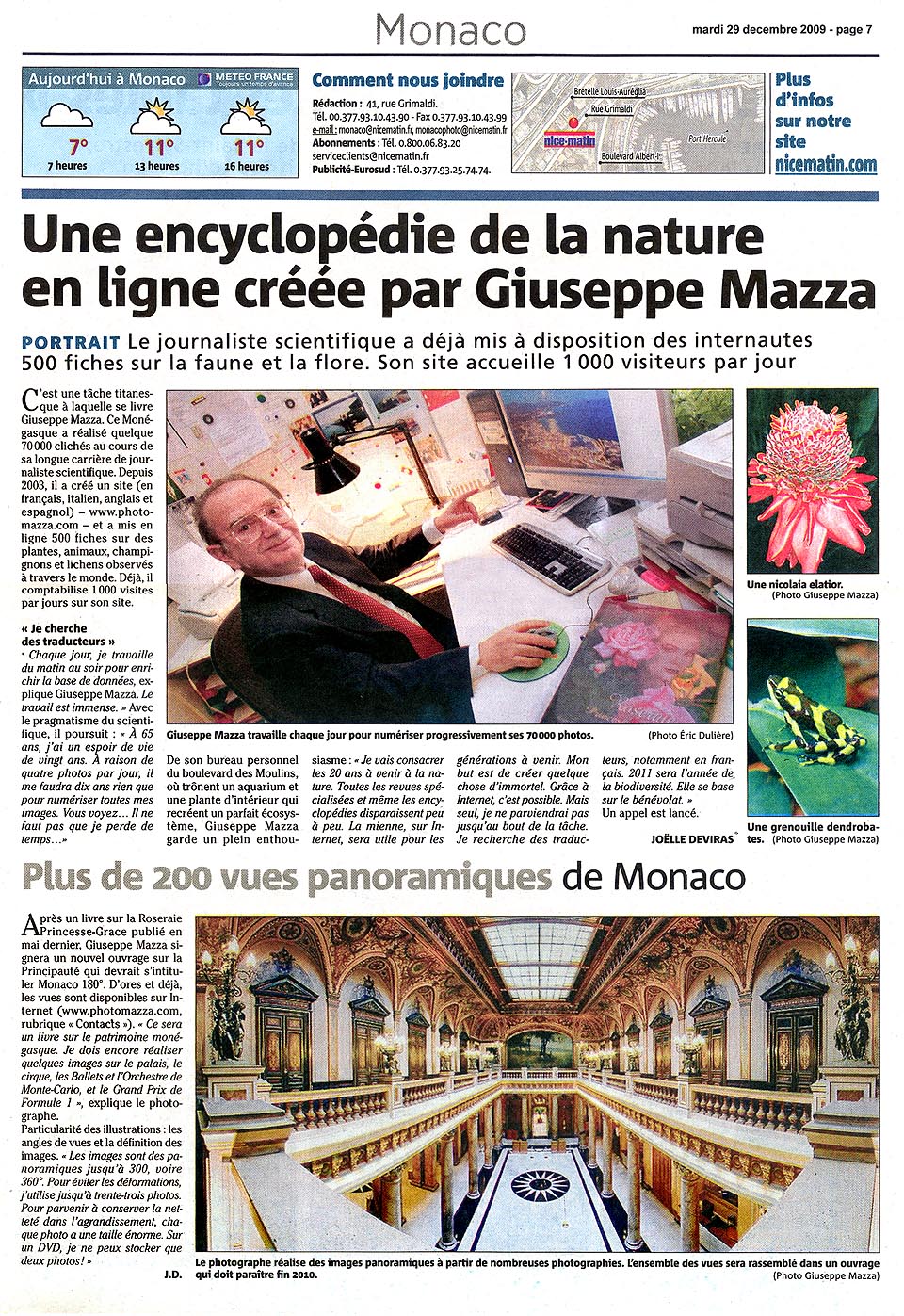
Monaco Matin article concerning my nature encyclopedia project
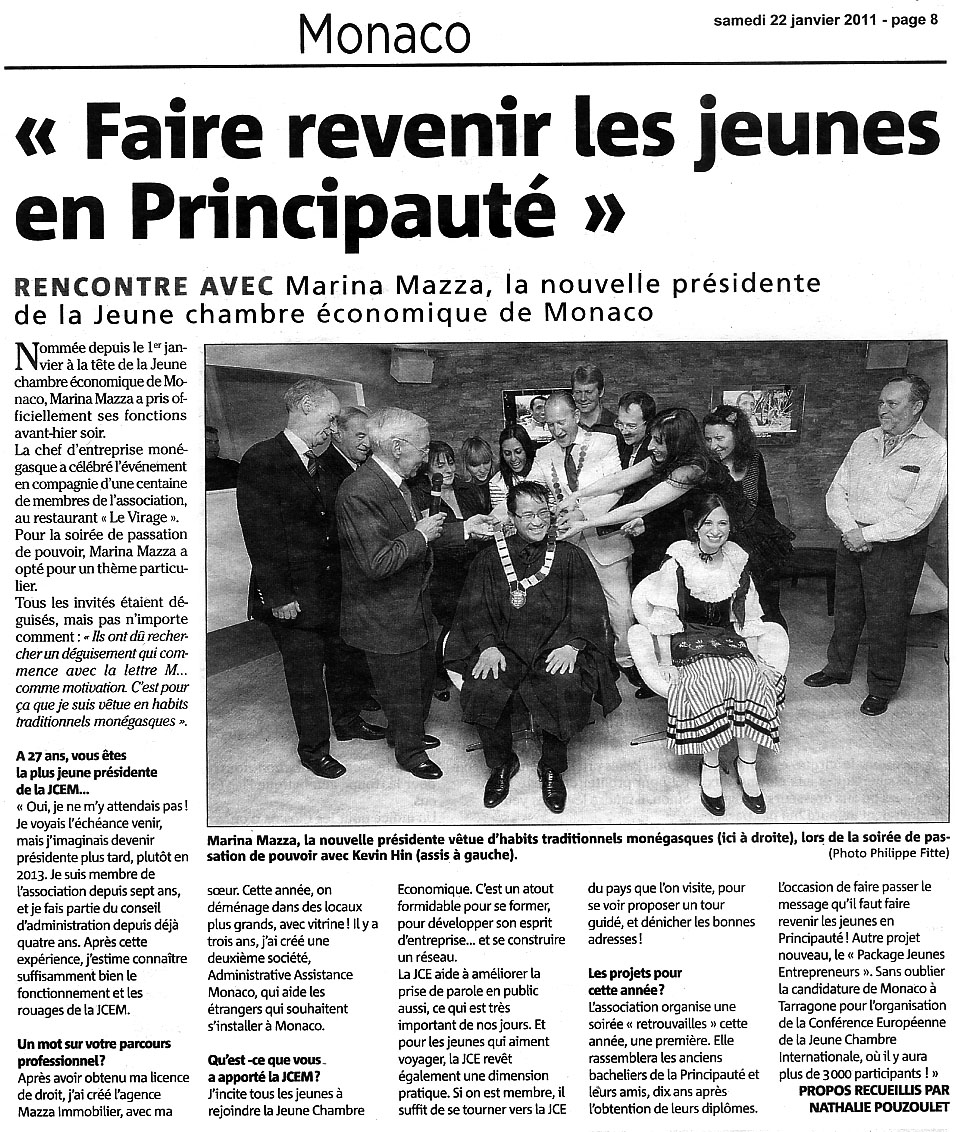
Monaco Matin – Marina Mazza is about to be inducted President of the Junior Chamber International in Monaco
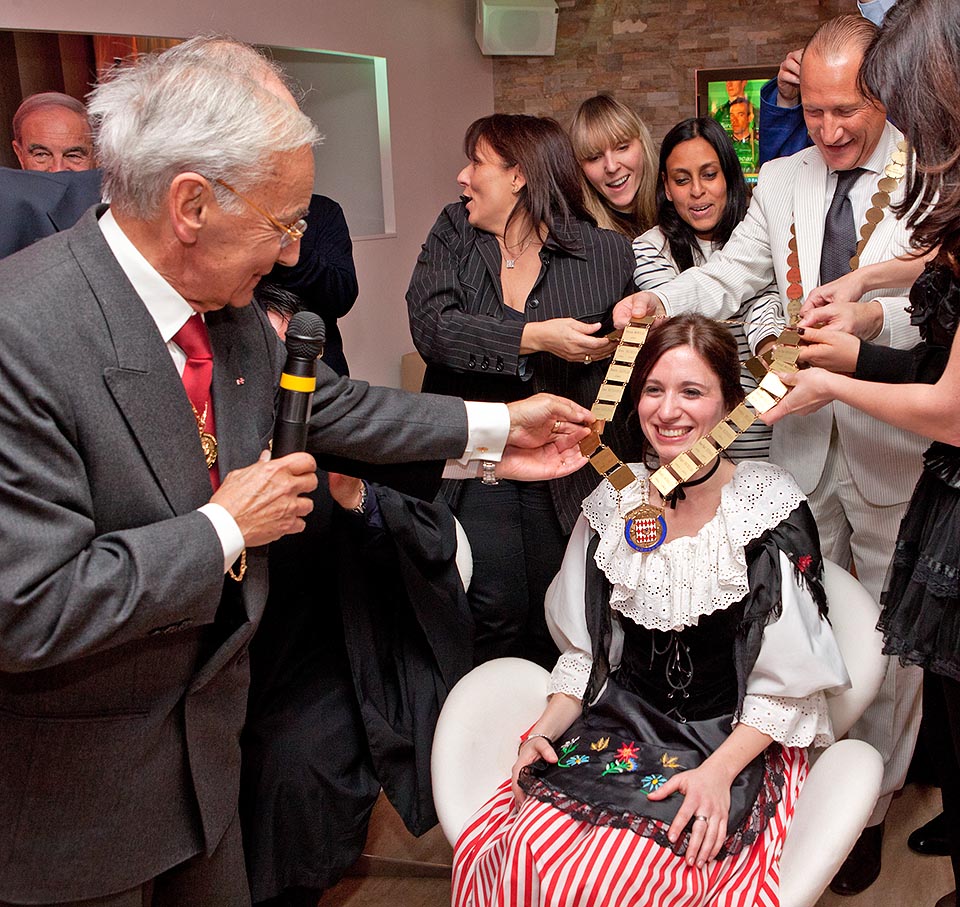
While passing the chain : on each plate is inscribed the name of a President of the Junior Chamber International in Monaco © JCEM – Philippe Fitte
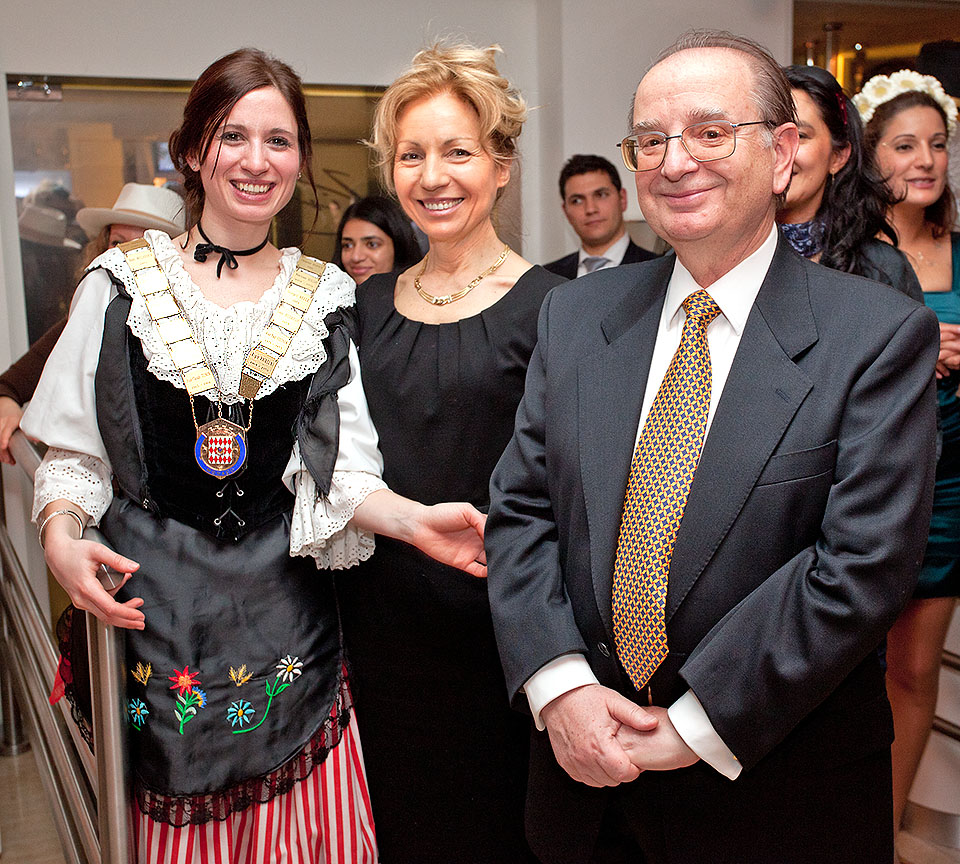
Marina, wearing the traditional Monegasque outfit, with her mother Giusy and her father Giuseppe © JCEM – Philippe Fitte
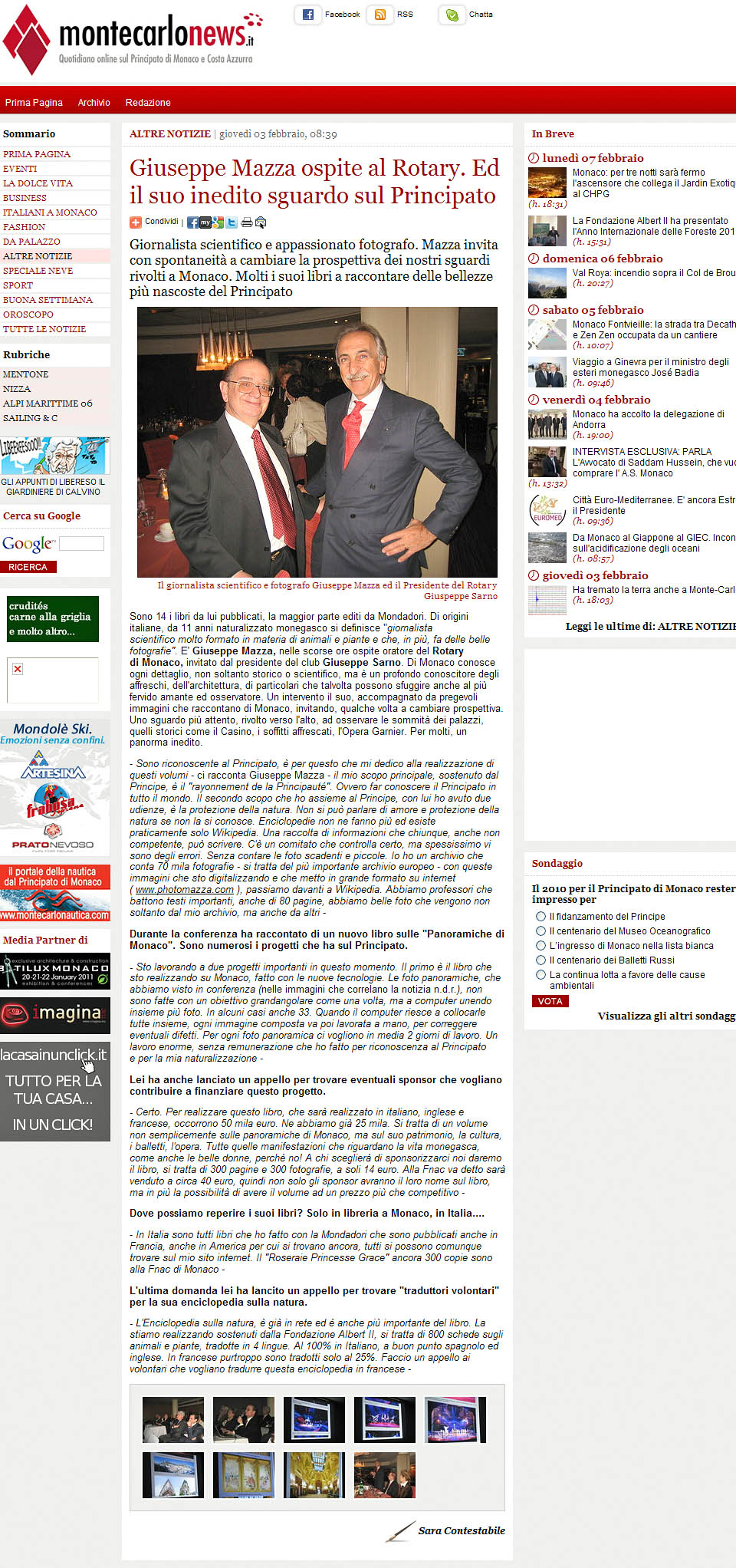
Conference held at the Rotary Club about the Principality of Monaco and its history
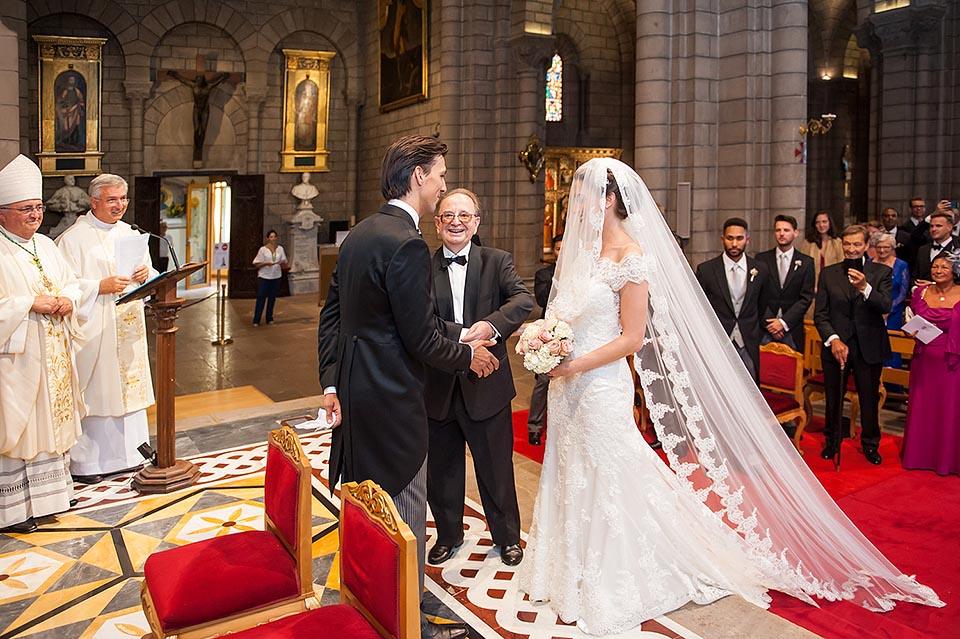
Wedding of Marina with Hendrik Halbe in the full moon of August 29th 2015
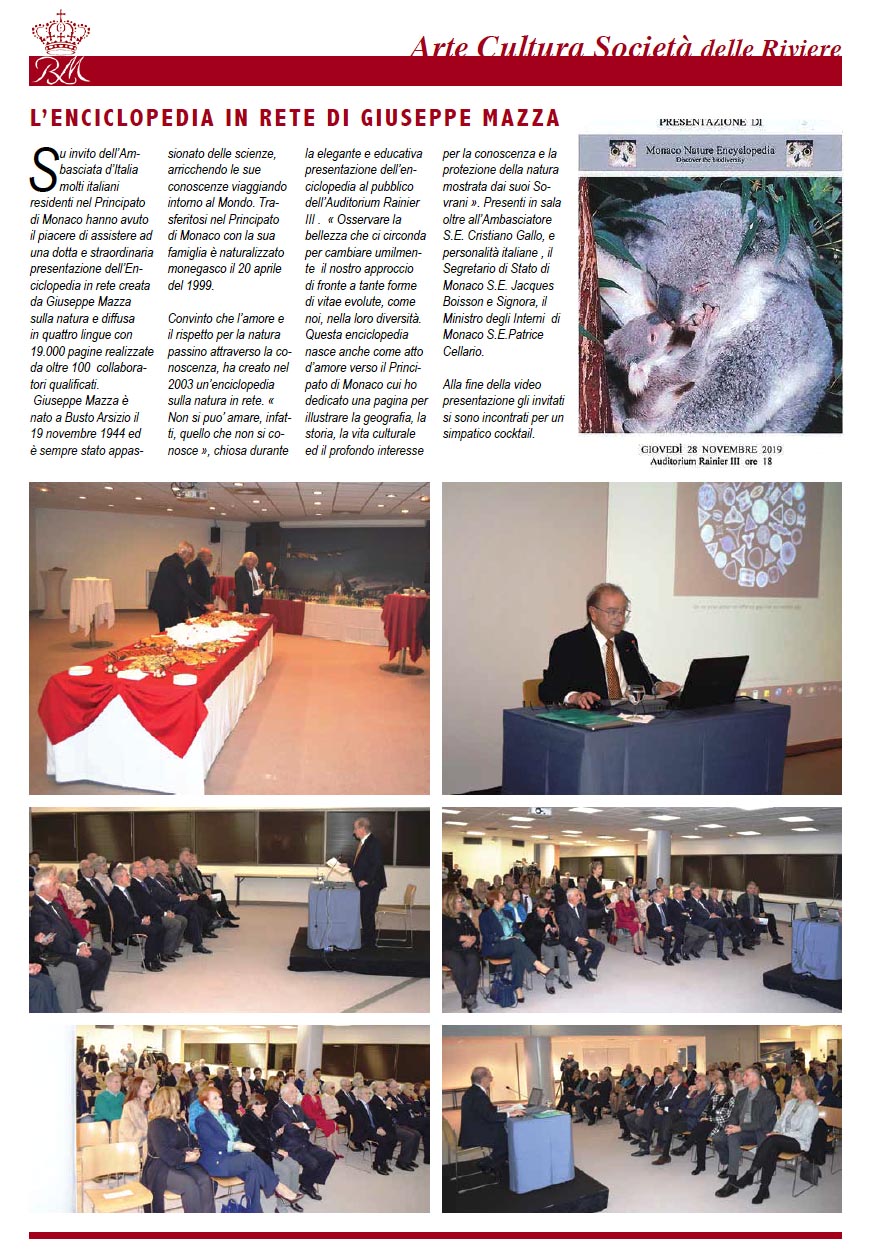
Introduction of Monaco Nature Encyclopedia
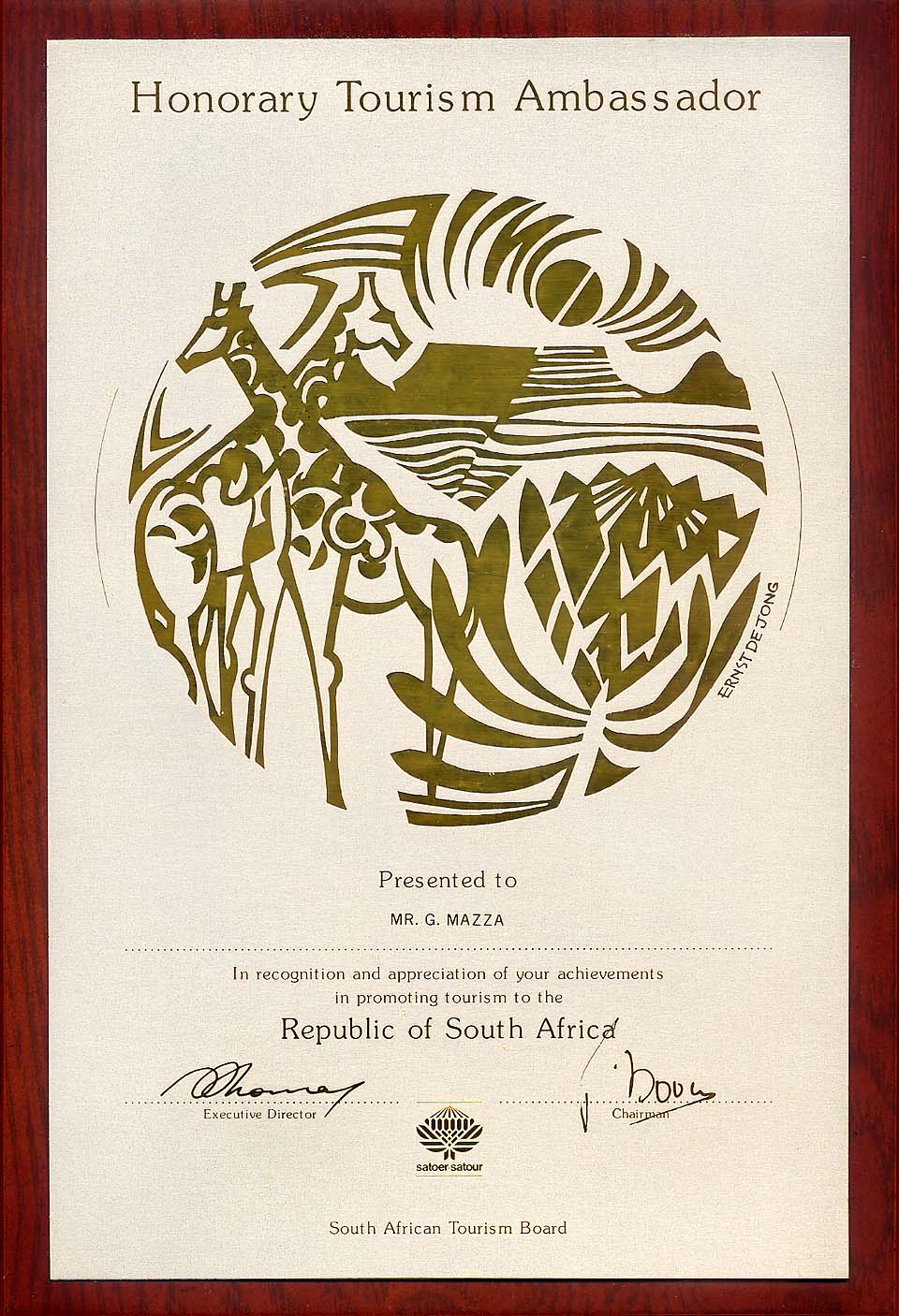
An award by South African Authorities
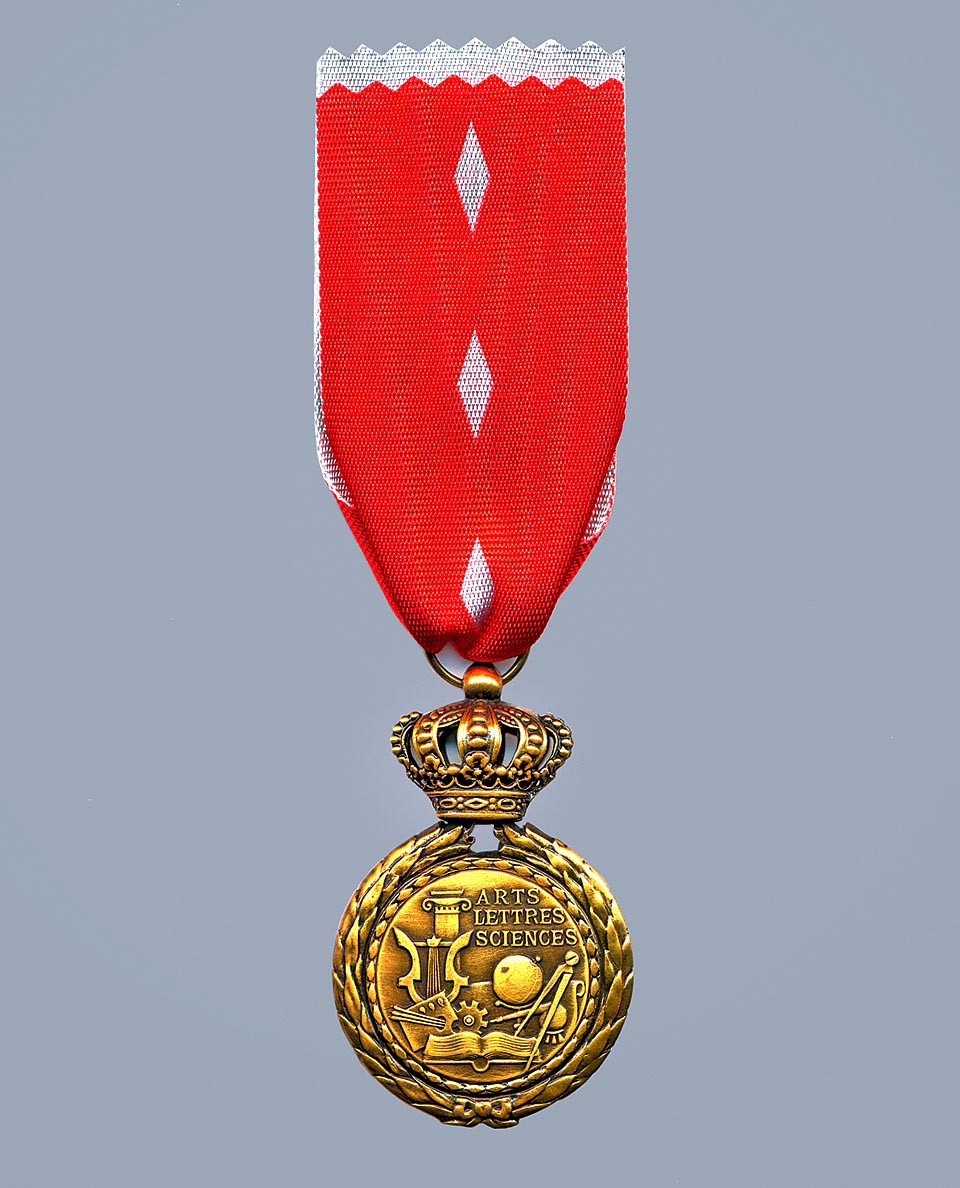
November 18th, 2016 – Appointed by S.A.S. Prince Albert II of Monaco as Knight in the Order of Cultural Merit © Giuseppe Mazza
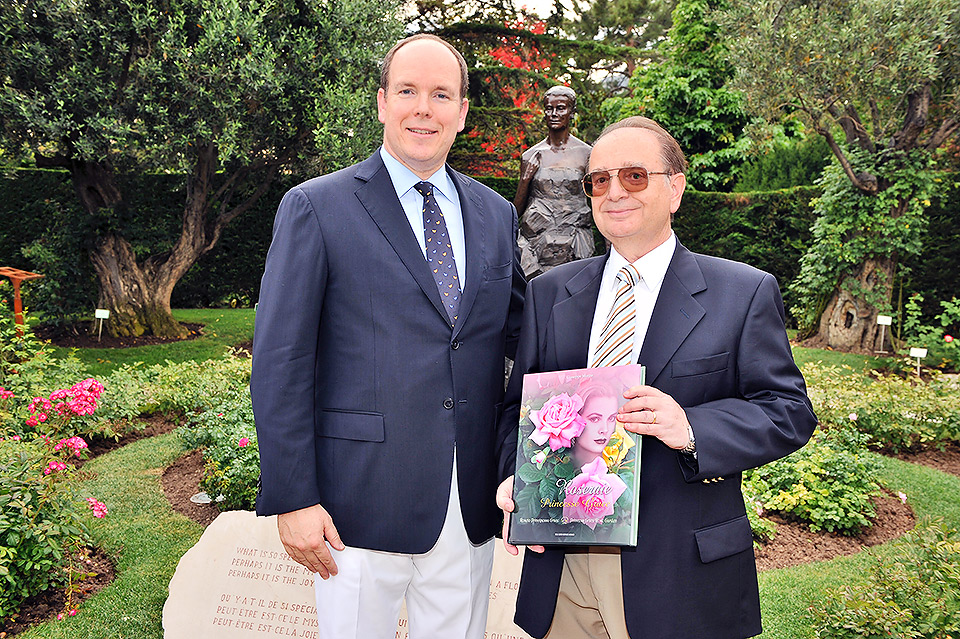
H.S.H. Prince Albert II of Monaco with Giuseppe Mazza for the celebration of the 25th anniversary of the Princess Grace Rose Garden – Photo by Gaëtan Luci.
